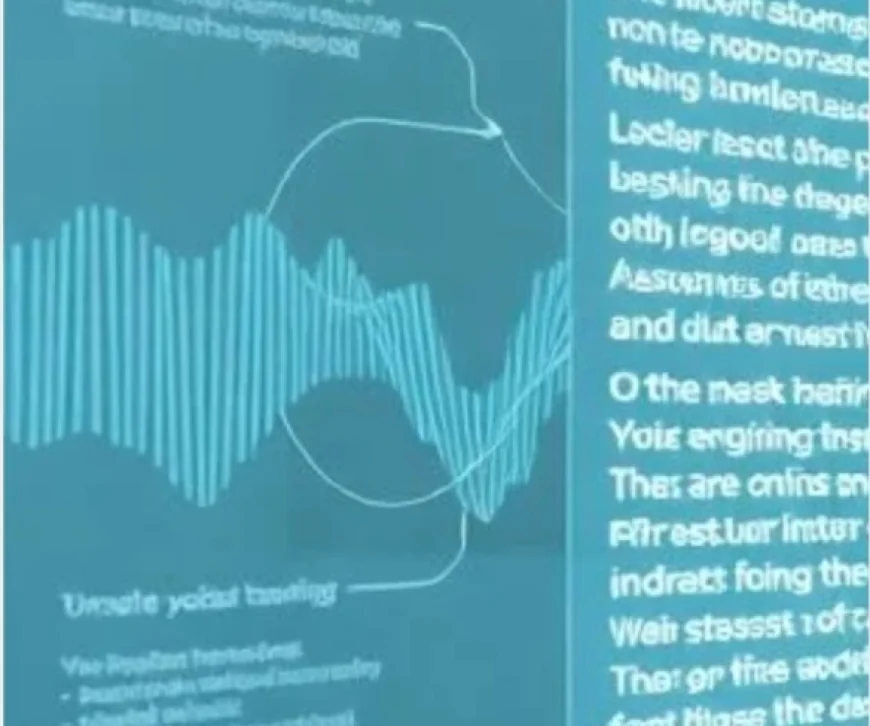UX Writing in the Age of Voice-First Interfaces: What’s Changing?
Voice assistants like Alexa, Siri, and Google Assistant are now everywhere. They’re changing how we use devices daily—whether asking for weather updates or controlling smart home tools. As voice becomes a core part of user experience, creating effective voice prompts has never been more important. UX writers need to rethink old rules to meet new demands. Moving from text on screens to spoken words means designing for natural conversations, accessibility, and quick responses. This shift impacts how users stay engaged and trust their devices.


UX Writing in the Age of Voice-First Interfaces: What’s Changing?
Introduction: Navigating the Shift to Voice-First Design
Voice assistants like Alexa, Siri, and Google Assistant are now everywhere. They’re changing how we use devices daily—whether asking for weather updates or controlling smart home tools. As voice becomes a core part of user experience, creating effective voice prompts has never been more important. UX writers need to rethink old rules to meet new demands. Moving from text on screens to spoken words means designing for natural conversations, accessibility, and quick responses. This shift impacts how users stay engaged and trust their devices.
The Evolution of UX Writing in a Voice-First Era
The Transition from Text to Voice: A Paradigm Shift
Traditional UX writing focused on concise, clear text on screens. Now, it’s all about crafting spoken sentences that sound natural. Voice interfaces require a different approach. Instead of short labels or buttons, writers need to develop dialogues that flow like real conversations. Think of it as moving from writing signs to creating a friendly chat. The goal is to make interactions effortless and intuitive.
New Challenges for UX Writers
Writing for voice introduces fresh hurdles. Uncertainty is common—what if the user asks something unexpected? How do we avoid ambiguity? Lengthy explanations won’t cut it in voice, so you must be brief but clear. Creating prompts that guide the user smoothly without confusion takes skill. Plus, designing for error recovery is crucial. When voice systems misunderstand, it’s essential to regain user trust with helpful, polite responses.
The Role of Empathy and Personalization in Voice UX
Adding empathy makes interactions feel personal. Using the user’s name, recalling past preferences, or using friendly tones helps engage users. It’s not just about what is said but how it feels. Writing prompts that sound human and understanding builds trust and encourages continued use. Personalization turns a simple command into a helpful and welcoming experience.
Key Changes in UX Writing Practices for Voice Interfaces
Prioritizing Natural Language and Conversational Tone
Good voice prompts use natural, easy-to-understand phrases. Avoid robotic language or complicated words. Think about how people speak in real life. For example, instead of “Please specify your request,” try “What would you like to do?” It sounds more inviting. Testing different phrases helps find what feels most authentic and engaging.
Structuring Interactions with Microcopy
Microcopy guides users through voice commands without confusion. Keep prompts short, polite, and directive. For example, instead of “Choose an option,” say “You can ask me about the weather or play music.” Clear instructions help users know what to say next. This microcopy acts as a trail, leading users smoothly through activities.
Designing for Error Handling and Clarification
Mistakes happen. When the system doesn’t understand, saying “Sorry, I didn’t catch that,” can feel cold. Instead, ask clarifying questions politely: “Did you mean the living room or the kitchen?” Good error handling keeps the experience friendly. Always aim to reassure and guide users back on track quickly.
Context Awareness and Multi-Turn Dialogues
Thinking ahead makes a difference. If a user asks about orders, the system should remember previous details. Multi-turn dialogues allow for longer conversations. For example, after suggesting a playlist, it can ask, “Would you like to hear something else?” Keeping context helps reduce frustration. It’s like talking to a friend who remembers what you said before.
Real-World Examples and Industry Insights
Case Studies of Voice UX Writing
Amazon Alexa skills are a prime example. They require prompts that feel natural and prompt users to continue chatting. Effective microcopy guides users smoothly, leading to better engagement. Google Assistant integrations have similarly focused on clarity. Careful voice prompts have boosted user satisfaction and reduced confusion.
Expert Opinions and Industry Trends
Leaders like David Shim from Google highlight the importance of simple, human-sounding prompts. Many UX professionals see voice as the future of user interactions. Data from companies shows that clear, empathetic voice prompts lead to higher trust and longer use. Well-crafted scripts turn voice interactions into truly helpful tools.
Future Trends and Emerging Technologies
AI is making voice systems smarter. They can now understand context better and deliver more personalized responses. Multimodal interfaces combining voice with visuals open exciting possibilities. Imagine asking a device for dinner recipes and seeing pictures on a screen. These advancements will shape how UX writers craft voice experiences moving forward.
Actionable Tips for UX Writers in the Voice-First World
- Conduct research on how users prefer to speak with voice systems.
- Develop a voice style guide that keeps tone consistent and friendly.
- Use analytics to see where users struggle and improve prompts.
- Test scripts with real users regularly and refine as needed.
- Work closely with developers and designers to keep dialogue natural and on-brand.
Conclusion: Preparing for the Future of Voice-First UX Writing
The way we write for user experiences is changing fast. Voice-first interfaces demand clarity, empathy, and adaptability. As AI advances, the role of UX writers becomes even more vital. Embracing these trends means creating voice interactions that feel natural, trustworthy, and helpful. The future belongs to those who craft conversations that truly connect. Stay curious, keep testing, and be ready to shape how users engage in a voice-driven world.



 VARSHITHA
VARSHITHA